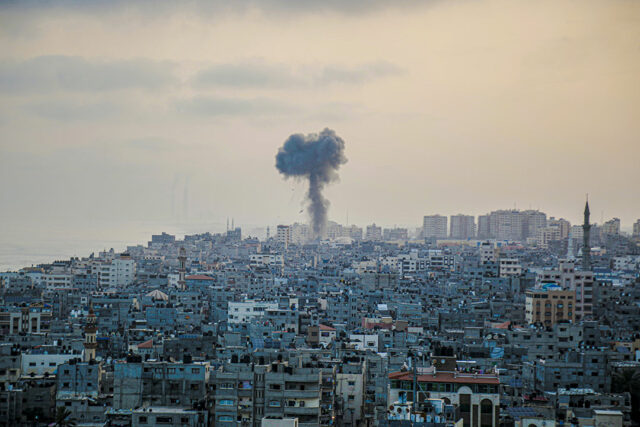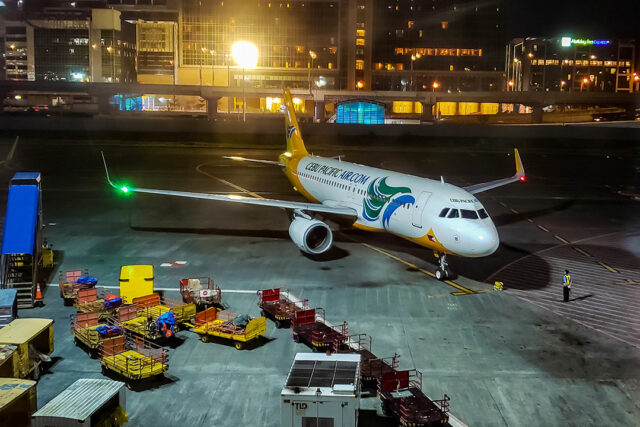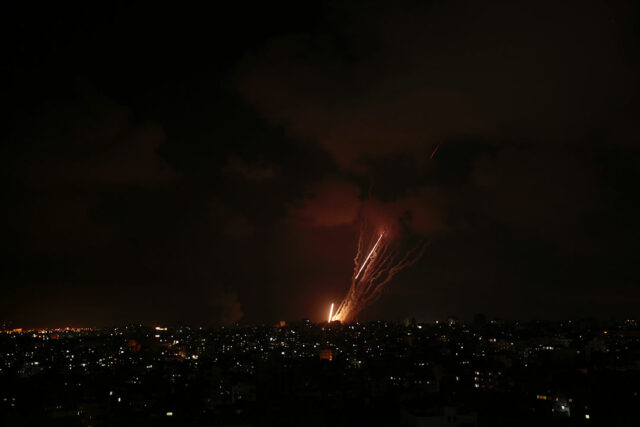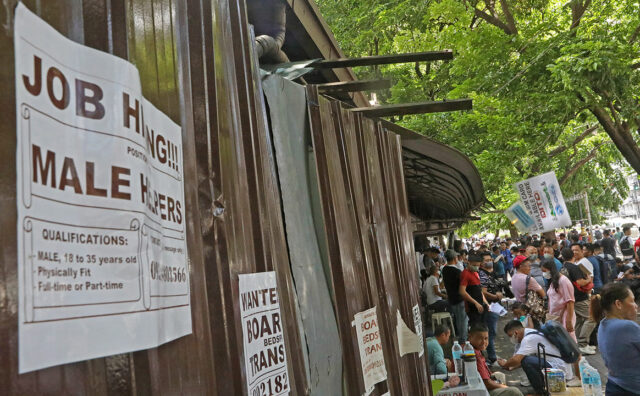As the International Monetary Fund (IMF) annual meetings in Morocco unfold, it warned against stubborn inflation and weak global growth in 2024. But it chose to be more circumspect with its assessment of the latest hostilities in the Gaza Strip. Gita Gopinath, the Fund’s First Deputy Managing Director, estimated that “If it turns into a wider conflict, and that causes oil prices to go up, that does have an effect on the economies.”
Such a scenario is likely to yield this correlation: a 10% increase in oil prices could lead to inflation rising by 0.4 percentage point one year after. As a consequence, global output might fall by 0.15 percentage point. Both challenges are additional headaches for central bankers everywhere, just after they expressed confidence that they were succeeding in containing the price surges following the invasion of Ukraine and the pandemic.
A not-too-different sentiment was expressed by the Bank for International Settlements (BIS) through its general manager, Agustin Carstens. While too early to be definitive, Carstens was rather quick in saying that the oil and equity markets might be in for harder days ahead. An unpredictable set of forces could worsen the global scenario that is already complicated by lower economic growth and possibly prolonged high interest rates in the United States.
All up, the cards seem stacked against a quick resolution of this long and winding search for peace in the Middle East.
As the New York Times reported, about 300,000 soldiers are assembling near the Gaza Strip for what could be a massive ground invasion of the territory. Israel announced that their mission was to ensure that Hamas “at the end of this war won’t have any military capabilities by which they can threaten or kill Israeli civilians.” That promises a long, protracted bloody war that could bring in many nations into the fold.
This must be the mission order corresponding to Israeli Prime Minister Benjamin Netanyahu’s threat that his country would inflict an “unprecedented price” and fight a war. The other day, he formed a unity government as hostilities escalated. He brought in two opposition lawmakers — both former army chiefs — to his cabinet. Israel needs to decide quickly whether to invade Gaza or even south Lebanon.
Both the IMF and the BIS fears of a wider conflict could therefore be a likelier scenario. Israel is smarting from the failure of security and intelligence, for no red flag was promptly raised when Hamas militants fired thousands of rockets and sent hundreds of gunmen into Israeli towns at 22 different locations near the Gaza Strip during the Jewish holiday of Sukkot. The assault reached as far as 24 kilometers away from the Gaza border, shooting at civilians and soldiers for hours. Saturday’s attack is considered the worst civilian massacre in Israeli history.
The leader of Hamas’ military wing, Mohammed Deif, clarified that this recent attack on Israel “was in response to the 16-year blockade of Gaza, Israeli raids inside West Bank cities over the past year, violence at Al Aqsa — the disputed Jerusalem holy site sacred to Jews as the Temple of Mount — increasing attacks by settlers on Palestinian and growth of settlements.”
This is not the first time we are seeing Israeli-Palestinian hostilities. They date back to biblical times. As Simon Sebag Montefiore, in his classic Jerusalem: The Biography, published in 2011, documented, even after the United Nations ruled to divide Palestine into Israel and Palestine in 1947, there were outbreaks of serious conflict, even with calls to “butcher the Jews.” In 1967, Israel occupied the Gaza Strip and the West Bank including East Jerusalem, establishing a two-tiered legal and political system that provides comprehensive rights for Jewish Israeli settlers while imposing military rule for the rest of the population. What we see today is an extension of these territorial differences.
Subsequent attempts to establish peace in Israel and West Bank and Gaza (WBG) peaked during the Oslo Accords signed between the Israelis and the Palestinians in 1993-95. As an IMF Program Note wrote, the Accords created the Palestinian Authority to build new institutions and develop both policy and a legal framework for the WBG as basis for a future Palestinian state. The outbreak of the second Intifada in 2000 disrupted whatever progress had been made. In fact, the IMF was mandated to provide some technical assistance to WBG focusing on tax administration, public expenditure management, banking supervision and regulation, and macroeconomic statistics. Financial support cannot be extended to WBG because it is not a member state.
But what is most concerning to the global economy must be the recorded message of Deif that the Saturday morning attack was only the start of “Operation Al-Aqsa Storm,” calling on Palestinians from East Jerusalem to Northern Israel to join the fight. This is consistent with its earlier assurance that Hamas is prepared for all options including all-out war.
It is quite challenging to be optimistic over the prospects for the global economy. The risks cannot be ignored. Both sides of the Gaza-Israel conflict are more than battle-ready, with sustained outbreaks of rocket launching and automatic fire in different parts of the disputed territory. Most iterations of what could happen appear to be pointing to an upset of medium- and long-term equilibria.
Today’s deep state of flux due to the economic scarring of the pandemic and trade tensions is bound to worsen due to the war’s potential hit on global inflation. The broader area is home to major oil producers such as Iran and Saudi Arabia. As Reuters recently wrote, it is also a major shipping lane through the Gulf of Suez, and therefore supply chains are most vulnerable. With the war, unless we see a defense deal between Washington and Riyadh, it is difficult to expect Saudi Arabia to raise its oil output and mitigate the potential disruption in oil supply. In the first place, Saudi Arabia has an outstanding agreement for a voluntary reduction in oil production of a total 1.3 million barrels a day. Some analysts are predicting a potential slowdown in oil exports this time from Iran.
Should inflation resurge, central banks may have little option but to tighten the monetary screws again. Otherwise, economic growth might be restrained, if not reversed.
Both the US Fed and the European Central Bank have already raised the risk of renewed hikes in energy prices to their inflation fight. The signs are beginning to show in Europe. Shares in European oil and defense companies a few days ago started soaring while the rest of the equities market exhibited significant weaknesses. A similar trend is also happening in the US. On top of that, while interest in the US dollar and assets seems to grow, the risks to inflation are gathering more momentum. That could all put the US Fed at a crossroad of deciding the next direction of monetary policy.
In the Philippines, as far as we could extract from the macroeconomic assumptions of the Development Budget Coordination Committee, the crude oil assumption for this year and the next is between $70-90. Recent oil prices are uncomfortably inching towards the high end. On top of that, based on the Bangko Sentral ng Pilipinas (BSP) statement after the Monetary Board meeting on monetary policy last month, many of the upside risks are vulnerable to significant oil price adjustments. Minimum wages have been adjusted in many parts of the Philippines. Transport costs for jeepney-riding public are bound to climb with the provisional increases granted by the Land Transportation Franchising and Regulatory Board (LTFRB) effective last Sunday. Power rates, while lowered in earlier months, could renew their increase if oil prices sustain their uptrend. Food prices continue to suffer from low farm productivity and huge adjustments in the cost of fertilizers and pesticides which are oil related. Food prices also react significantly to higher transport costs.
All of these are at the back of the market’s mind, so it’s not impossible that inflation expectations are also de-anchored.
We therefore expect to see the BSP upgrading its forecasts for the next three years given the second upsurge of inflation in September. If October inflation disappoints again, we can expect more tightening for the last two meetings of the Monetary Board in 2023. To what extent, it is difficult to say. While the Israel-Hamas conflict is likely to affect our economic calculus, it is also a wild card, for which we need to prepare.
A wild card is, after all, an unpredictable factor.
Diwa C. Guinigundo is the former deputy governor for the Monetary and Economics Sector, the Bangko Sentral ng Pilipinas (BSP). He served the BSP for 41 years. In 2001-2003, he was alternate executive director at the International Monetary Fund in Washington, DC. He is the senior pastor of the Fullness of Christ International Ministries in Mandaluyong.












